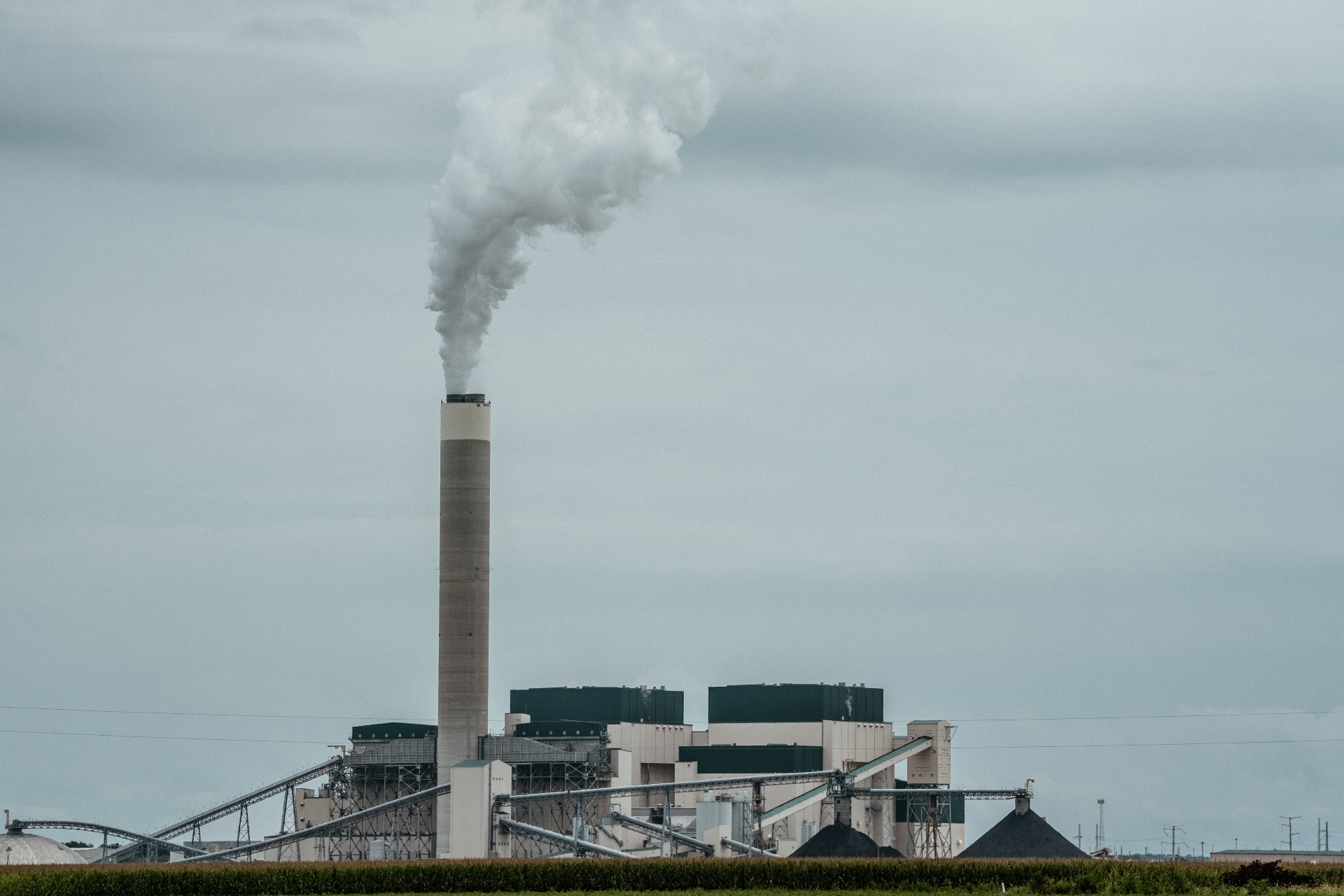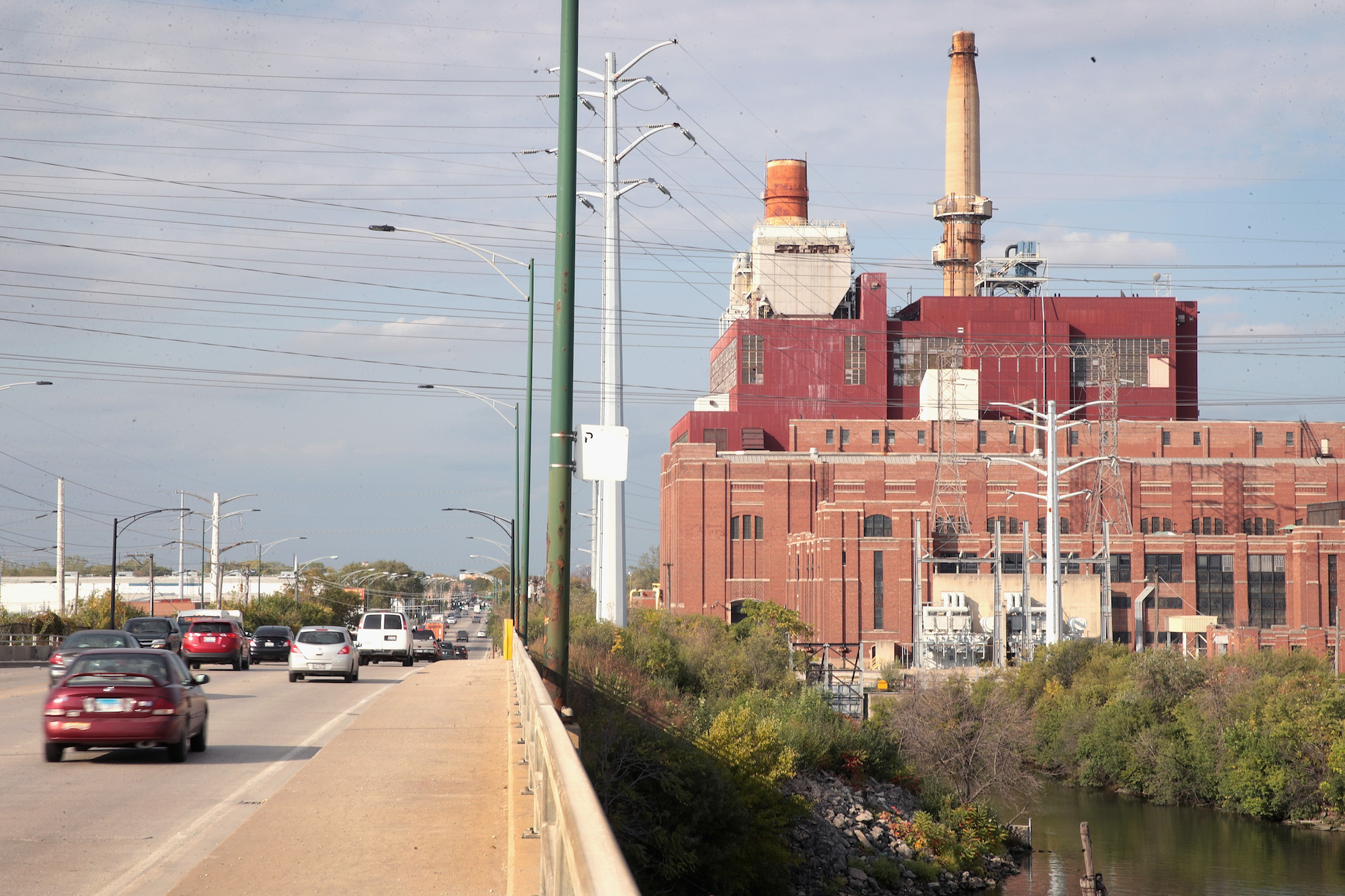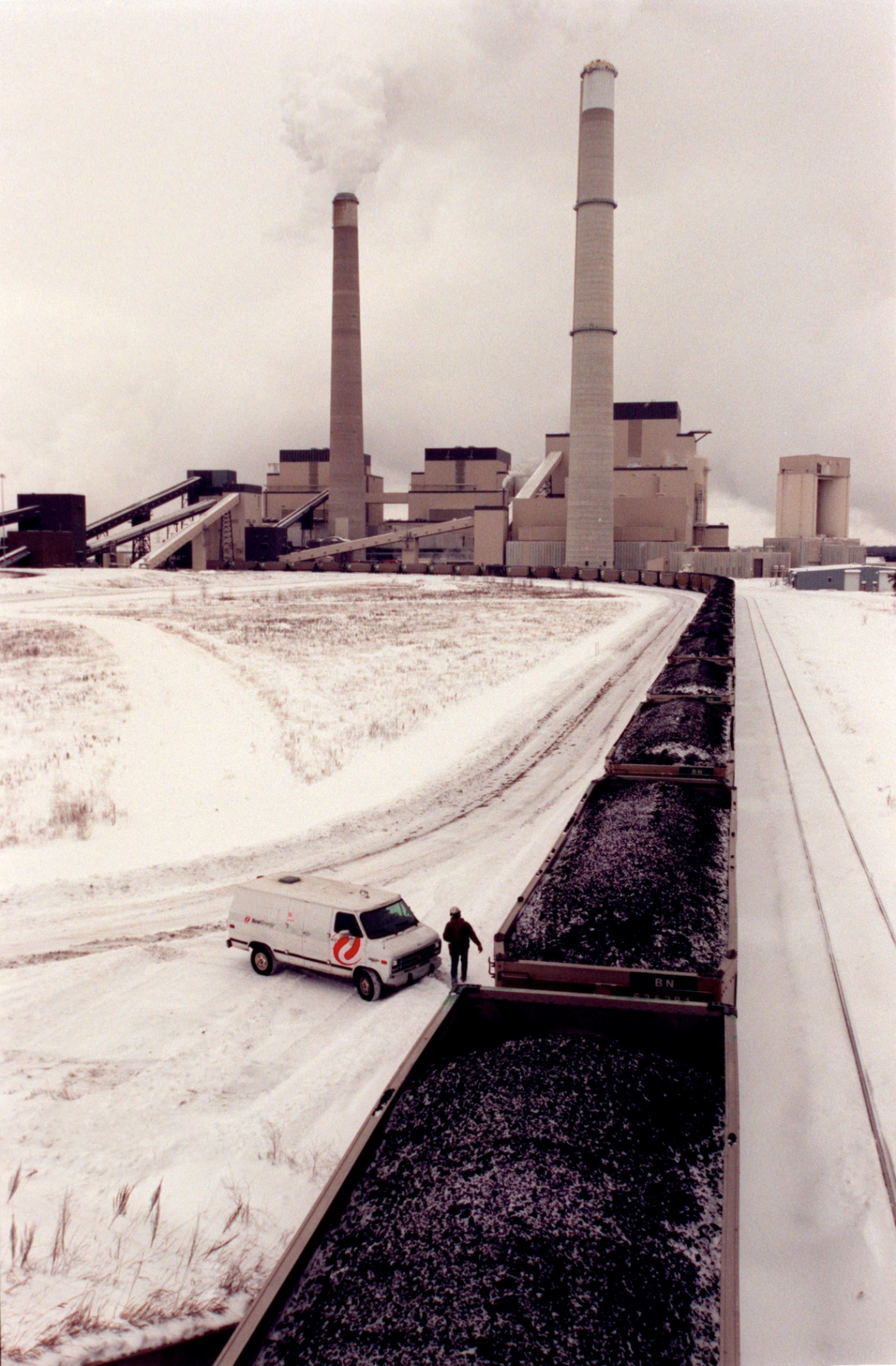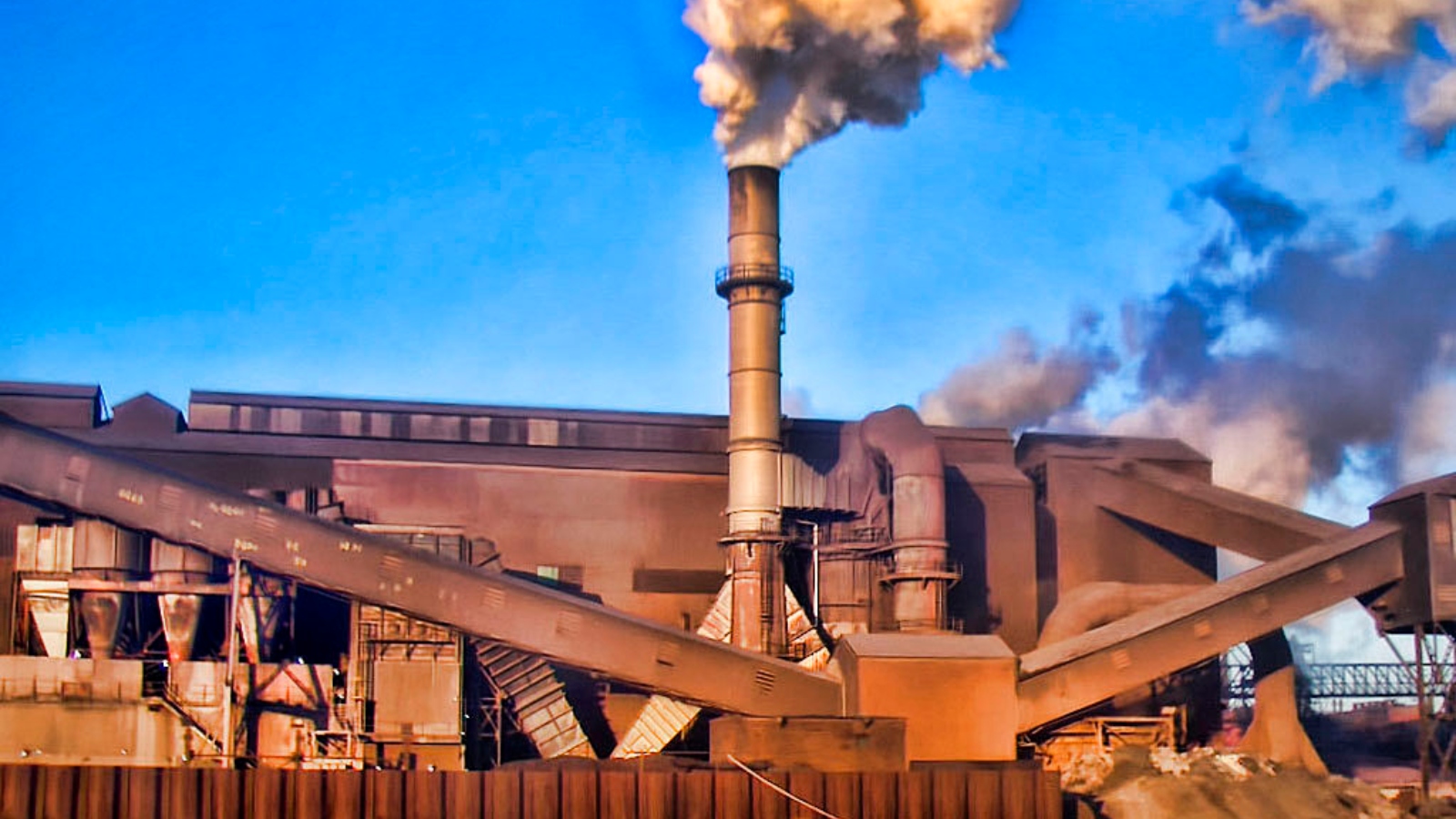Across the Midwest, communities grapple with the idea of a future without coal
Oct 4, 2023
The parade wouldn’t start for another hour, but Rosemary Fulton was already bundled in her folding chair on an unseasonably cool Sunday in August, right there on Main Street in the small town of Marissa, Illinois.
She wasn’t alone. Other residents were starting to set up their own folding chairs and coolers on either side of Main Street. A shiny banner a few blocks down announced the celebration: Marissa’s Annual Coal Festival, colloquially known as Coal Fest.
Fulton, 81, had parked herself in front of the village hall, the name of its original occupant still carved in stone on the side: First National Bank.
There was a time, Fulton said, when she couldn’t walk down Main Street without seeing multiple friends and neighbors going about their business. The town was livelier, she said, and that was because of coal.

More than 40 years ago, Marissa was considered a capital of coal mining in the Midwest, with more than a dozen mines in the area. The area’s history with coal stretches back further, to the 1850s, when coal was first mined commercially in the southern part of the state. By 1882, St. Clair County, which encompasses Marissa, was the top producing coal county in Illinois.
There’s evidence of that history all over the village: mining artifacts in the Marissa Historical Museum; a coal miner monument in the city park; and, of course, Coal Fest. The annual celebration of all things coal includes a carnival, a meet-and-greet with coal miners, a cornhole tournament, and the crowning of a local teenager as Coal Queen.
But coal isn’t king anymore, not in Marissa and not in the Midwest, where coal plants face an uncertain future. All across the region, villages, cities, and towns are reckoning with what climate change will mean for coal, not just as an energy source but as a cultural icon in America’s heartland. Despite feelings of pride in coal-dependent communities, coal is still one of the most carbon-intensive fossil fuels, sickening people and polluting waterways. Some populations look at the end of coal not with nostalgia but with relief. But for all of them, one question remains: What does a world without coal look like?

Virginia Harold
The Marissa annual Coal Festival parade on August 13, 2023. A truck with a group of veterans is followed by the Marissa Marching Meteors band and cheerleaders. Virginia Harold

Virginia Harold
The weekend’s festivities also include a carnival and the crowning of the Coal Queen. Here, Coal Queen candidate MacKenzie Jetton rides in the parade. Virginia Harold

Virginia Harold
[Explore more photos of the annual Coal Festival in Marissa]
In Marissa, plenty of people, including Fulton, want coal use to continue. Fulton sees the decline of the industry reflected in the decline of her community. Most of the people in Marissa are passionate about coal because it provides one of the last economic opportunities in town: a job at the power plant or the mine underneath it.
“We need this industry to keep going in this area,” said Fulton. “We need the employment. We need the people. We need it for our schools, libraries, all that good stuff.”
Marissa, Illinois
Marissa is situated about 40 miles outside of St. Louis, just across the border in Illinois. Outside the town’s boundaries sits one of the most polluting facilities in the country, the Prairie State Energy Campus. The combined underground coal mine and power plant emitted 12.4 million tons of carbon dioxide last year — the equivalent of nearly 2.7 million cars driven for one year. At certain spots in town, you can see the plume of smoke coming out of a smokestack so tall, it resembles a skyscraper next to the endless cornfields.
Coal used to be a point of pride for Midwesterners, with mines dotting the area until new clean air standards in 1990 shut many of them down. Now Prairie State is one of a few still standing. In recent years, while natural gas has dominated in most other parts of the country, the Midwest still has relied on burning coal for energy, For many small towns, coal was the primary form of economic opportunity for multiple generations, paving the way for its residents to buy homes, raise their families, and live comfortably in rural areas.
Now that coal is on the way out, many towns don’t want to be left behind in the looming national energy transition. For well over a decade, coal has been outcompeted economically by fracked natural gas and increasingly cheap renewables. Now, a push to decarbonize the power sector, both from the federal government and private utilities, is resulting in even more coal plants being demolished, replaced, or transitioned to renewable energy production.

But the end of coal in the Midwest isn’t a foregone conclusion. Some coal power plant owners are resisting calls to close their plants. And opinions among the coal plants’ neighbors are mixed — some residents resent the pollution, while others appreciate the economic benefits. In places like Marissa and across the region, the transition away from fossil fuels represents the decline of the only industry that generations of residents have ever known.
Given the town’s mining history, “It’s not a surprise that these are [some of] the last coal plants to be built in the country,” said Christine Nannicelli, a senior staff member at the Illinois chapter of the environmental group the Sierra Club.
Nannicelli notes that in Illinois, the last 20 years have seen a steep decline in both the usage of coal and in the proposed number of new coal-fired power plants. Coal power generation in particular has taken a nosedive in the last decade, decreasing from 41 percent of electricity in the state in 2012 to 21 percent in 2022, according to the U.S. Energy Information Administration. Nannicelli estimates that of 24 coal-fired power plants proposed at the start of this century, only two were built. One is Prairie State, which came online in 2012.
The plant is one of the top 10 polluting facilities in the United States. For Nannicelli, Prairie State has always been “the elephant in the room.” She remembers that even at the start of her tenure at Sierra Club in 2010, it was dedicated to trying to shut down the project.
A law passed by Illinois Governor J.B. Pritzker in 2021 to transition the state off of fossil fuels and create jobs in the process laid out a timeline for closing the plant by 2045. But a lawsuit from the Sierra Club aims to close the plant sooner.
The lawsuit, filed in March of this year, claims that the Prairie State Generating Company has been violating the Clean Air Act by operating without a permit for over a decade. In the last year, the plant has been cited by the Illinois Environmental Protection Agency for releasing too much mercury and other pollutants into the atmosphere.
Meanwhile, the Prairie State Energy Campus wants to extend the life of the power plant far beyond its slated 2045 closure date. To do this, the company is looking into carbon capture technology, which would trap carbon dioxide before it escapes the plant’s smokestacks. The carbon could then be sequestered deep underground. Southern Illinois has been proposed as an apt site for carbon storage, because the same geologic features that made it a haven for mining coal for the last few centuries also provide what could be a robust place to store captured carbon. The presence of porous sandstone deep beneath the surface provides the perfect container for carbon, which has led to a plethora of proposed carbon capture projects in the state.

Virginia Harold
Marissa Coal Festival attendees included Paul Weilmuenster, a former coal miner, and Roy Dean Dickey, a Marissa Village board trustee (on porch), and Maria Cathcart (in chair), a lifelong Marissa resident and daughter of a coal miner who died of black lung. Virginia Harold

Virginia Harold
Many in Marissa are supportive of carbon capture as a lifeline for coal in the area, including Paul Weilmuenster, who worked in coal mines for 30 years.
“Maybe more coal mines would pop up if they had these power plants with the [carbon dioxide] recovery and everything,” Weilmuenster said.
But many experts say that it doesn’t make sense to use expensive carbon capture technology to keep coal plants alive, since power plants with carbon capture still release other pollutants and because there are many cleaner and more economical alternatives for power generation.
“We do not view carbon capture and storage as a realistic or responsible investment for coal,” said Amanda Pankau, director of energy and community resiliency at Prairie Rivers Network, an environmental nonprofit based in Illinois.
Pankau doesn’t rule out carbon capture completely, though. But she says that it should be used in sectors that have no other viable ways to reduce their emissions, such as cement and steelmaking, and not as a replacement for the transition to clean energy.
“We think that there are more immediate, cost-effective opportunities to produce energy with technologies that are proven, and that carbon capture and storage should be a last resort down the road for hard-to-decarbonize industries,” she said.
While Prairie State’s fate hangs in the balance, Weilmuenster feels that the town’s days are numbered.
“I can say that this town is shrinking,” said Weilmuenster. “The last census in 2020, we only had 1,800 people.”
The town has lost nearly 700 people since its population peak in 1980, and the effect is clear, according to Weilmuenster.
“The town is dying,” he said.
Chicago
In 2012, the same year that Prairie State went into operation, another coal-fired power plant closed, nearly 200 miles north in Chicago. It was the result of more than a decade of organizing by community members. Still, issues with industrial pollution plague the neighborhood today.
Crawford Generating Station was part of a complex within an industrial corridor on the city’s southwest side, in an area that is majority Latino. It opened in 1924, alongside Fisk Generating Station, another coal-fired plant that opened in 1903. Its proximity to resources like the Chicago River and, later, Interstate 55, a major highway, made it the perfect place for one of the few coal plants within city limits, according to Kim Wasserman, executive director at the Little Village Environmental Justice Organization, or LVEJO. She notes that both the highway and river supported the movement of goods in and out of the plants.
“So when you talk about the movement of goods, this site sits in an industrial quarter, which has very lax laws in regards to usage and planning,” Wasserman said.

But that same proximity to resources also ensured that pollution from the coal plant would impact Chicago residents, some of whom lived only blocks away.
Those downsides were personal for Wasserman, whose first child developed asthma within a few months of being born in 1998. After she realized the cause could be living next to a coal plant, she joined LVEJO, the organization her parents started, and began a campaign to close Crawford, which one local nonprofit described as one of the “oldest and dirtiest” coal plants in any city in the U.S.
“[I] started my career on this campaign, just going door to door, talking to people,” said Wasserman. “How many of their families understood that there was a coal power plant in their backyard?”
Eventually, after 12 years, Wasserman and partners at organizations like Sierra Club and Greenpeace claimed victory when then-mayor Rahm Emanuel ordered Crawford and Fisk to cut their emissions or close.
“As much as I can’t stand that man, he was willing to pressure the coal power plant where the Daley administration wasn’t,” said Wasserman, referring to Richard M. Daley, who served as Chicago mayor from 1989 to 2011.
Despite the huge victory, the Crawford coal plant would still haunt the neighborhood almost a decade later.
In the aftermath of its 2012 closing, city officials and developers were eyeing the land to possibly build a distribution warehouse. And then, a planned demolition of the plant in 2020 made headlines when city officials and the owners of the plant allowed it to go forward weeks into the COVID-19 pandemic. The collapse of a smokestack killed one worker and covered the community in dust.
“It’s probably one of the worst experiences I’ve ever had in my lifetime,” Wasserman said.
The implosion of the smokestack further angered residents who had fought to close the plant. Neighbors were once again at its mercy, and at a time when few people knew how COVID-19 would affect their communities.
“This is one of the most densely populated communities in the city of Chicago, and there was little to no communication to us about what was going to happen, how it was going to happen, what the precautions were,” said Wasserman. “We kept showing like, ‘Hey, we have concerns about the process.’”

Max Herman/NurPhoto
While the demolition of Crawford imperiled an already pollution-burdened neighborhood, Sierra Club’s Nannicelli, who also helped campaign for the closure of the plant, notes that it is relatively rare for coal plants to be located so close to communities on valuable urban real estate.
“It doesn’t seem like the owners of coal plant properties now are as anxious to sell,” said Nannicelli. “I just think the dynamics of Crawford and other coal plant sites are a little bit different.”
Still, as more coal-fired power plants come offline, Crawford remains a lesson, Wasserman said, of how not to demolish a coal plant.
“You have the city once again, showing you that … the lives of Black and brown people don’t matter by what they did to us,” said Wasserman.
Wisconsin
Farther north In Wisconsin, another aging power plant can’t seem to close, despite risks to both the climate and people’s health.
The Oak Creek Power Plant in Oak Creek, Wisconsin, 12 miles south of Milwaukee along Lake Michigan, was constructed in 1959. After almost seven decades of burning coal, the power company that owns it announced in 2020 that it would decommission the plant by 2023 to further its wind, solar, and natural gas investments.
The decommission announcement coincided with an industry-wide push to decarbonize the energy and utilities sectors. We Energies, the plant operator, announced at the time that the closure would reduce carbon emissions by 55 percent by 2025 and help the utility meet its goal to be fully carbon-neutral by 2050.
As of September of this year, the plant is still in operation.
The Oak Creek plant has had continual delays in its supposed path to closure. Last year, We Energies delayed the closure until 2025. According to a company statement at the time, the updated timeline was caused by supply chain issues for materials needed for renewable projects, such as solar panels, and other logistics problems.
In August of this year, We Energies hinted at more delays to the plant’s closure. During an earnings call for investors, questions swirled regarding the energy-intensive data center that Microsoft is constructing in a nearby village. Investors wondered whether it would once again delay Oak Creek’s closure or affect the utility’s plans to transition from coal.
Data centers are large warehouses where servers and computers run continuously to power websites, apps, software, and various other aspects of the internet. These facilities use up to 50 times more energy than a commercial office building, according to the U.S. Department of Energy.
The land the data center will be built on, a total of 300 acres, is part of a controversial technology project, known as Foxconn in Wisconsin, thought to be a boondoggle by many in the state. Located in rural Mount Pleasant, the tech complex is operated by Taiwan-based LCD manufacturer Foxconn. In 2017, the village was promised thousands of manufacturing jobs at an LCD screen production plant, which was once heralded as the world’s eighth wonder by then-President Donald Trump.
Five years later, the manufacturing jobs promised haven’t materialized.
Brendan Conway, We Energies’ spokesperson, told Grist that no specific customer, new or old, was responsible for Oak Creek Power Plant’s delayed closure.
“Microsoft had no bearing on our plans to extend the operating lives of the Oak Creek units,” Conway said in an email.
Conway reiterated that the delayed decommission was caused by energy and supply chain issues, saying that two We Energies solar projects were still awaiting solar panels. He said Oak Creek’s delay is based on supply chain issues and projected increases in energy demands throughout the state, not a new data center being built.
Oak Creek is slated to decommission half of its coal units in 2024 and the other half by late 2025. Conway did not say whether the company has plans for the plant’s physical location once decommissioning is complete.
“These are just the best talking points that money can buy,” said Wisconsin state Senator Chris Larson, a Democrat whose district includes Oak Creek, Milwaukee, and towns along the shoreline of Lake Michigan in southeastern Wisconsin. “There seems to be no move to actually follow through on these claims and promises.”
Larson said that as We Energies lags, Wisconsin residents and Great Lakes communities are left paying the price of coal pollution with their health.
When utilities burn coal, the byproduct, called coal ash, is stored in large landfills, commonly called ponds or pits. The leftover material contains metals and radioactive materials known to cause cancers, congenital disabilities, and respiratory diseases.
Lake Michigan has 12 toxic waste sites related to burning coal, according to a report from the Midwest-based Environmental Law and Policy Center.
“There is a huge profit incentive for them to just keep using cheap, dirty coal,” Larson said. “The cost of people’s health is not on the spreadsheet for We Energies, so they can give a middle finger to those kids with increased asthma. But they are on the hook for trying to get as much profit as they can for their investors.”
As coal keeps burning in Wisconsin, customers’ utility bills are increasing. Almost every utility in the state has proposed a rate increase, including We Energies, whose proposed hike is attributed to lower-than-predicted prices for natural gas. The company hopes to offset this loss by rising monthly energy costs.
According to the utility watchdog group Citizens Utility Board of Wisconsin, We Energies hopes to increase its rates and bring in an additional $132 million, funded by its electric and natural gas customers.
The price hike, set to take effect in 2024, is also linked to the utility’s plans for building solar power facilities.
Jadine Sonoda, a coordinator with the Wisconsin chapter of the Sierra Club, said closing Oak Creek Power Plant would be a positive step for the community surrounding the plant. She said people in Wisconsin and the Midwest are increasingly aware of how fossil fuel combustion causes climate change.
“The coal that is being burned by We Energies is directly contributing to heat waves, wildfire smoke, and flooding across the state,” said Sonoda. “This understanding of what climate change looks like, feels like, and how it will impact people is really increasing people’s knowledge around energy sources.”
But even as We Energies has pledged to close its Lake Michigan coal plant and invest in clean energy, the utility has continued to invest in fossil fuels. This year, the utility completed construction on a natural gas plant near Wausau, a city in Wisconsin’s center.
“As we build more renewable energy power plants, these modern and low-carbon generation units will ensure the lights stay on when the sun is not shining and the wind is not blowing,” said Scott Lauber, president and CEO of We Energies, in a statement announcing the plant’s opening.
Natural gas is predominantly methane, a powerful greenhouse gas responsible for 30 percent of the planet’s warming to date. Sonoda said We Energies’ push to include gas in its clean energy plans is alarming because of its contribution to climate change.
“Gas infrastructure is very similar to coal infrastructure, and we’re getting ourselves into the same problem that we’ve already been in before,” Sonoda said. “If we don’t break that cycle, we’re going to just end up in even more trouble than we’re already facing.”
Minnesota
In Minnesota, one utility company is transforming a coal operation in hopes to transition a rural community once beholden to fossil fuels.
Xcel Energy is converting a coal-fired plant in Becker, a small city of roughly 5,000 people near the Mississippi River in the eastern part of the state, to a solar power plant. According to a company spokesperson, the coal-fired plant is still in operation, with the decommissioning occurring in phases.
Known as the Sherco coal plant, it’s set to be fully decommissioned by 2030. As the coal plant is retired, its buildings will become home to new solar and clean energy technologies. Kevin Coss, an Xcel Energy spokesperson, said the transition from coal to solar is part of a company-wide effort to produce 80 percent of its energy from renewables by 2030.

“Right now, solar energy makes up 4 percent of our Upper Midwest energy mix,” Coss said. “We expect that number to be closer to 9 percent in 2026, the first full year of the installation’s operation, and 13 percent once the coal plant has been fully retired in 2030.”
The new solar plant is expected to be the largest in the Upper Midwest and one of the biggest in the country. With a planned completion date of 2025, the solar plant will have a 460-megawatt capacity, roughly enough to power 100,000 homes. Xcel will convert almost 3,500 acres of rural Minnesota to solar panels.
Coss said the transition has been supported by Minnesota’s statewide push for clean energy, including by the state legislature. He also stressed that workers wouldn’t suffer in the transition to solar.
“We are committed to a smooth transition for employees at the Sherco plant, who have played a vital role in powering the region for decades,” Coss said. “We have already transitioned other Minnesota coal plants without layoffs, and we expect to accomplish this again at the Sherco facility.”
But concern over a smooth transition for those working at coal plants remains.
While the Midwest’s role in that mining tradition has often been overlooked, any energy transition will need to center the same communities that were central to that legacy, and those who suffered because of it, according to Pankau of Prairie Rivers Network.
Pankau, who herself resides in rural southern Illinois, knows that even though the climate crisis demands that the U.S. stop burning fossil fuels, the legacy of coal communities is one to celebrate.
“There needs to be a place for the coal festival,” said Pankau. “Coal was a huge part of these communities and a huge part of Southern Illinois, and even today, it continues to be. We’re not erasing that.”
Coronation
Back in Marissa, the parade was long over and the sky was darkening when it was time to announce the next set of Coal Fest royalty. Princess candidates in blue, purple, and pink dresses, some wearing mascara, walked the stage clutching the hands of their fathers or another male relative. Mothers accompanied the young boys aspiring to be named prince.
As they walked, the background noise remained at full carnival: the sound of whirring mechanics from rides like The Swinger, people chatting in line at the barbeque stand run by the fire department, cries of dismay from combatants at the ring toss. But as the time came for the naming of the Coal Queen of 2023, there was a palatable hush in front of the stage.
And then applause as MacKenzie Jetton, a local high school graduate, was named Coal Queen. Friends cried out her name — “Kenzie! Kenzie!” — and she accepted the sash emblazoned with “2023 Queen.” Her hot pink gown glowed under the lights and she stood next to her prince and princess, and they posed on the stage for pictures, their faces bright and smiling. They were the future, whatever it might bring.
This story was originally published by Grist with the headline Across the Midwest, communities grapple with the idea of a future without coal on Oct 4, 2023.
